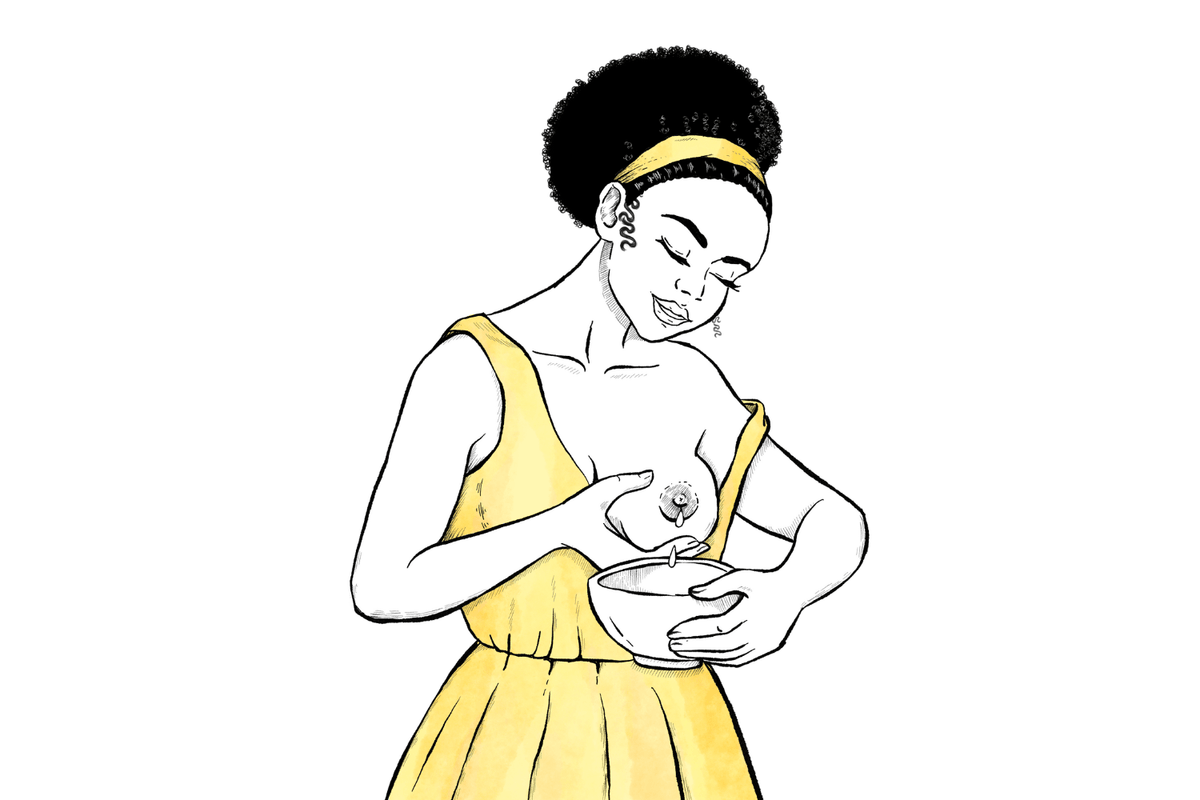
Hand Expression Techniques: When, Why, and How to Do It
|
5 min
|
5 min
Learning how to express your milk by hand is an incredibly useful skill. Hand expression means using your hands (fingers and thumb) to rhythmically massage and compress your breast to remove milk, instead of relying on a baby or a pump. It might sound old-fashioned, but it’s highly effective in many situations. Let’s break down when and why you might use hand expression, and then how to do it step by step.
Here are some scenarios where hand expression can be a helpful (or even superior) method of milk removal:
NOTE: Please consult with your doctor, midwife, or lactation consultant before beginning antenatal hand expression. For those on pelvic rest or who have a high-risk pregnancy, an antenatal hand expression may be discouraged by your healthcare provider.
In the first few days postpartum: When your baby is a newborn, especially if they are having trouble latching or if you’re waiting for mature milk to come in, hand expression is often more effective than a pump for collecting colostrum. Colostrum is the thick, antibody-rich first milk that comes in small quantities. A pump might not suction well on a soft breast or may not draw out much colostrum, but your hands can gently compress drops out. Hand expressing early on can also stimulate your milk supply – in fact, moms who hand expressed in the first 3 days were found to have higher milk volumes weeks later (3). So if your baby can’t nurse well yet (due to prematurity or latch issues), expressing by hand is a fantastic way to start establishing your supply.
If you are engorged or your breasts are very full: When your breasts are overly full, they can become hard, and baby may struggle to latch onto a taut nipple, or the pump may not be able to effectively draw out milk. Hand expressing a little milk to soften the areola or utilizing reverse pressure softening can relieve engorgement and make it easier for baby to latch on. Just a few minutes of expression before feeding can make a big difference. It’s also a comfort measure for you – relieving that pressure feels good and prevents issues like plugged ducts. Unlike a pump, your hands can be more gentle and you can control exactly where and how much to express for relief.
When you don’t have a pump available: One of the beauties of hand expression is that it requires no equipment, electricity, or special setup . Anytime you find yourself without a pump – maybe traveling, at work without your pump parts, during a power outage, or simply away from baby unexpectedly – you can still remove milk to stay comfortable and maintain supply (2). All you need is a clean container to collect the milk (even a cup or bottle will do) and clean hands. Many mothers keep hand expression in their toolkit for those just-in-case moments. It’s free and always accessible.
To boost your pumping output (hands-on pumping): Even if you do have a pump, combining hand expression with pumping can greatly increase how much milk you get. Some moms will pump until the flow slows, then stop and massage/hand express for a few minutes, and then pump again – often, more milk flows out. Research shows that using “hands-on pumping” (massaging and hand expressing in addition to pumping) can yield up to 48% more milk for mothers of infants, especially those with babies in NICU (1). Hand expression helps empty the breasts more completely after the pump’s done its job, which in turn signals your body to produce more. So if you’re pumping and not getting as much as you’d like, try adding some hand expression to the routine.
Clearly, there are many reasons to practice hand expression. Beyond the scenarios above, it’s just an empowering skill – knowing that you can get milk from your breasts with nothing but your own two hands can increase your confidence in feeding your baby. It’s a bit of a lost art, but once you learn how, you might actually enjoy it. Many moms are amazed at how well it works once they get the technique down.
Here are the basic steps for expressing milk by hand (3):
Press back toward your chest: With that C-hold, press your thumb and fingers straight back toward your chest wall and down (imagine pushing into your breast, not squeezing it yet). This helps position your fingers over the milk reservoirs under the areola.
Compress (squeeze) your fingers and thumb together: Now gently press your thumb and fingers toward each other , compressing the breast tissue between them. It’s not a hard pinch of the skin, but a firm pressure on the deeper tissue. This compression should start to push milk forward toward the nipple. You might see beads of milk appear on the nipple or even a small spray.
Release and repeat – Press, Compress, Release Rhythmically: After the squeeze, relax your hand (release the pressure) to allow the milk ducts to refill. Then repeat the motion in a rhythmic manner: push back, squeeze, release… push, squeeze, release. It often helps to establish a pattern, almost like pumping by hand. Keep doing this until the flow of milk slows from that area. Then, move your hand to a different position around the breast (for example, rotate your C-hold so you’re compressing different quadrants of the breast) and repeat the process to drain other milk ducts (3). You might move your hand placement a few times to fully empty each breast – think of the breast like a clock, and express from all “time zones” around it. When the first breast is soft and milk is only dripping or has stopped, switch to the other breast and do the same. You can go back and forth between breasts a couple of times if you’re trying to maximize output.